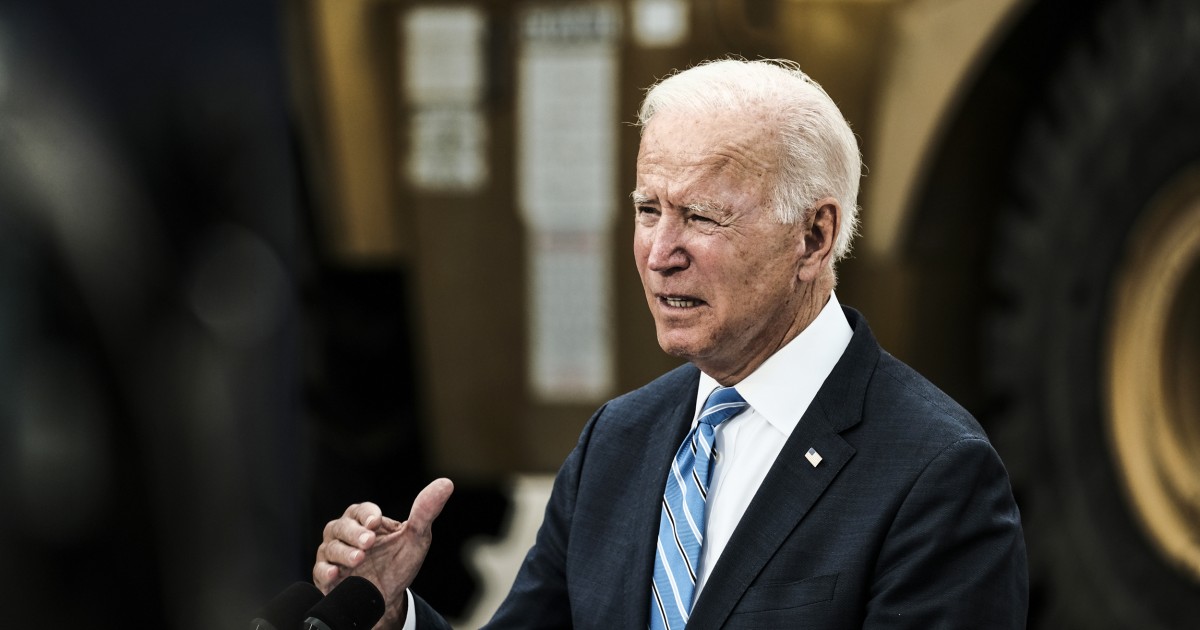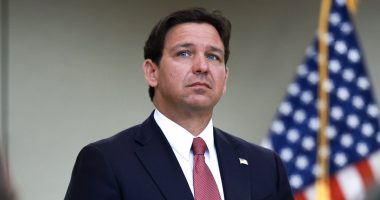
WASHINGTON — White House officials, now anticipating that parts of the economy could continue to struggle for months to come, are looking for ways to stave off a potential threat to Democratic prospects in the 2022 elections.
While the economy has significantly improved since President Joe Biden’s first days in office, a second month of slower-than-expected hiring led the president and senior administration officials to acknowledge last week that the recovery has not been moving as quickly as they’d like, and that inflation and worker shortages could continue for months to come.
That leaves the White House looking at the prospect of a slowing economic recovery through the rest of Biden’s first year — and into 2022. To message through those coming months, administration officials are planning to highlight whatever bright spots they can find, such as rising wages and the pace of economic growth, and use the weak spots to bolster their pitch for why Congress needs to pass a proposed $3.5 trillion spending bill, according to a person close to the White House.
White House officials are also planning to continue their vaccination efforts in hopes that more workplace mandates will encourage people to return to the workplace in the coming months, the person said. To show he’s working to address product shortages driven in part by bottlenecks at major shipping ports, Biden will be meeting Wednesday with shipping executives and officials from Walmart, UPS and Home Depot.
The prospect of a sluggish economy going into 2022 has Democratic strategists beginning to prepare for what that could mean for their prospects in the midterm elections. Republicans say they plan to seize on the weak points of the economy, hoping to link inflation and worker shortages to Biden’s policies, as part of their pitch to voters.
“If people are paying more for everything, and prices are skyrocketing more than wages, that’s a potent campaign message for Republicans in the midterms,” one chief of staff to a House Republican said. “When the average American is paying more for gas and groceries under a Democratic controlled government, that is something Republicans can run on.”
The latest economic figures add to a list of setbacks the president has been dealt with in recent months. Biden entered August with the United States having created nearly a million jobs in July, Covid-19 deaths near their lowest point, and the Senate close to a deal on a $550 billion infrastructure package. But two months later, the nation is adding just a fraction of that number of jobs, nearly 2,000 mostly unvaccinated people dying a day from Covid, and the infrastructure bill is deadlocked in Congress.
Amid the domestic troubles, Biden has also faced criticism over the past two months for his handling of the withdrawal of U.S. troops from Afghanistan and the response to a flood of migrants at the southern border.
Those issues appear to be taking a toll on his poll numbers. Just 38 percent of people approved of the job Biden was doing, the lowest score he’s received since taking office, a Quinnipiac poll released last week found. On the economy, just 2 percent of respondents described the economy as “excellent” and 27 percent described it as “good” while 69 percent said the economy was “not so good” or “poor,” the poll found.
White House officials believe passing two pieces of spending legislation — the $550 billion infrastructure bill and the proposed $3.5 trillion social safety net bill — will give Democrats a crucial platform to run on in 2022 despite whatever economic headwinds may exist next year, a person familiar with the White House’s strategy said.
The White House believes the bills could also address some of the short-term issues in the economy, such as providing child care and eldercare relief to get people back into the workforce, the person said. Both pieces of legislation, though, are stalled in Congress amid Democratic infighting over what programs should be included, how they should be paid for and how high the price tag should be.
“The economy is a big pain point for the White House,” one Democratic strategist close to the administration said. “I think that’s why they are leaning so hard on this infrastructure bill, they think the investment will be good for the economy, and I think that’s why they have been so bullish on spending.”
The White House sought last week to emphasize the bright spots in September’s jobs report released Friday that showed the U.S. added 194,000 jobs in that month, compared with the Dow Jones estimate of 500,000.
In remarks after the jobs numbers were released, Biden pointed to a drop in the unemployment rate, an increase in wages and the rate of growth over the course of his presidency. He also sought to emphasize the nearly 5 million jobs created since he took office.
But at the same time as the White House has talked up the economic progress made, it has also used the areas of weakness to make the case for why Congress needs to pass Biden’s spending bills. Following last week’s jobs report, Biden argued the economy was on a steady trajectory, while acknowledging it wasn’t recovering as quickly as he would like.
“We’re actually making real progress,” he said. “Maybe it doesn’t seem fast enough, I’d like to see it faster and we’re going to make it faster, maybe it doesn’t appear dramatic enough. But I too would like, as I said, to move faster. We’re making consistent steady progress though.”
Top administration officials, including Treasury Secretary Janet Yellen, have predicted consumers could continue seeing higher prices and product shortages through the rest of the year as the market continues to work through supply chain bottlenecks and worker shortages. Inflation is running at a 3.6 percent year over year rate, a 30-year high, according to the Federal Reserve’s preferred measure of inflation.
“Supply bottlenecks have developed that have caused inflation,” she said during an interview with CNBC last week. “I believe that they’re transitory, but that doesn’t mean they’ll go away over the next several months.”
White House officials have said they believe a key factor to getting Americans back in the workforce and addressing labor shortages companies face is increasing vaccination rates. Officials said they hope a coming Labor Department requirement that large companies ensure their workers are vaccinated or regularly tested will further spur that, but that employer requirement is likely weeks away from being implemented, according to a person familiar with the process.
Another factor that could alter the economy’s trajectory in the coming months is whether the Federal Reserve decides to begin pulling back on the help the central bank has been providing, which would lead to higher interest rates. Federal Reserve Chairman Jerome Powell has indicated it will occur before the end of the year, though Friday’s lower than expected jobs figures could affect that decision.
In the meantime, Republicans say they plan to keep their sights on weak spots in the economy as they make the case for the 2022 midterms.
“There’s any number of issues voters care about when they enter the polling booth, the state of the economy is always No. 1,” Dan Eberhart, a major Republican donor and energy company CEO, said. “Biden is trying to blame Republicans for the downward spiral of the economy, but it’s not going to fly.”
Source: | This article originally belongs to Nbcnews.com










